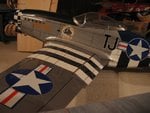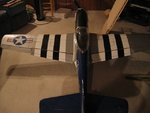Colin1
Senior Master Sergeant
Any of you guys bored? 
Giant 1/5 Scale P-51D Mustang Plans,Templates,Instruc on eBay, also Aircraft, Radio Control Vehicles, Radio Control Control Line, Toys Hobbies (end time 14-Jun-09 01:56:06 BST)
Giant 1/5 Scale P-51D Mustang Plans,Templates,Instruc on eBay, also Aircraft, Radio Control Vehicles, Radio Control Control Line, Toys Hobbies (end time 14-Jun-09 01:56:06 BST)
As an eBay Associate we earn from qualifying purchases.


